New Customer?
Create your accountNo products
Prices are tax included
By buying this product you get 263 loyalty points
Accessories for this product
'This is the 2020 version equipped with the latest Accusilicon 318B clocks. These clocks offer increased performance over previous TCXO models and allow the DAC to operate with increased accuracy.
Crystek clocks are also used for the USB interface.
Audio-GD R-7 2020
AUDIO-GD R-7 Balanced R2R DAC FPGA I2S HDMI Amanero 32bit 384kHz DSD512
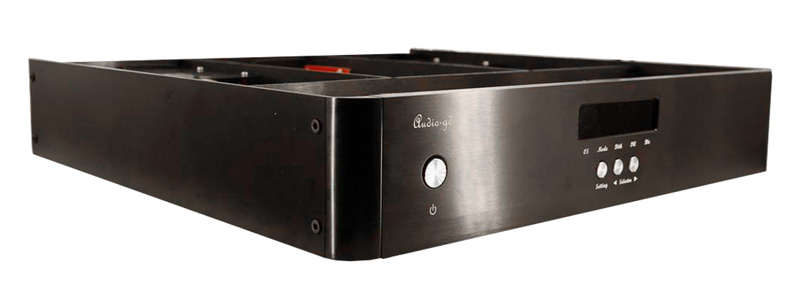
The Audio-GD R-7 is a high-end DAC based on a discreet R2R symmetrical design with optimized high-speed Ladder correction using the FPGA FIFO as a buffer and reclocker. As usual, for the design of the R-7 Audio-GD, Audio-GD chooses to integrate the best components into its device for exceptional performance. There are WIMA and NOVER capacitors, DALE and Vishay resistors or KOA transistors. The architecture of the DAC, particularly well designed with a low noise power supply stage or a discreet analog output stage, allows for a very rich sound reproduction. In addition, the R-7 includes Amanero USB or I2S LVDS inputs to support DSD / DxD files and PCM sampling rates up to 32bit 384kHz.

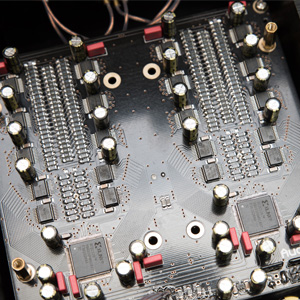
R2R Design
The R-7 is a DAC R2R, a design that has become popular thanks to its undeniable sound qualities, especially when integrated into high-end products. While there are several methods for designing a DAC R2R that impact both performance and design complexity, Audio-GD continues to choose the highest quality as usual.
The design chosen by the brand switches the ultra-low tolerance resistors in parallel and an ultra-fast FPGA chip corrects the R2R scale. This design allows you to control and correct each bit distinctly to achieve incredible performance. In addition, with this parallel structure, a single clock cycle allows all the data to be processed, where a series connection would require 8 to 24. Thanks to this architecture, Audio-GD allows its R-7 to correct imperfections in basic R2R assemblies, i.e. those caused by resistance tolerance.
Main advantages of the DAC R2R Ladder discrete:
- The R2R does not convert the clock signal into the output signal.
- R2R is less sensitive to jitter.
- R2R provides a more accurate output signal.
Easier usage
While the brand has been accustoming us for a while to filter settings made using switches under the hood of its devices, it now offers improved ergonomics by offering to make these settings directly from the front of the device. Indeed, buttons allow you to simply choose the active filter, without any need to remove the device. The R-7 offers 4 filters in NOS mode and 3 filters in Oversampling mode. In the same perspective of simplifying the use of the DAC, Audio-GD integrates a Micro USB port on the back of the device allowing easy firmware updates.
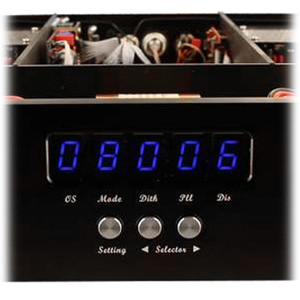
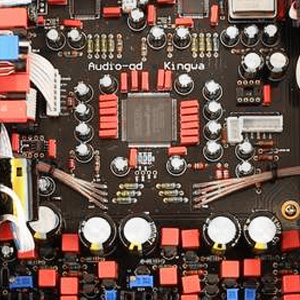
Ultra fast signal processing
FPGA chips, now widely used in the audio world, allow full control of the hardware by a software layer. One of the major advantages of this technology is the ability to easily perform updates, thus allowing the device to be improved without necessarily having to replace components. It is therefore both an efficient and flexible solution.
In the R-7, the FPGA is responsible for 3 major points:
- The FPGA acts as an excellent high-performance SPDIF interface, much more efficient than a conventional chip.
- It allows a complete re-clocking with a FIFO design applicable to each input. In this way the output data is fully synchronized with the clock signal to greatly reduce jitter.
- The FPGA also includes 2x, 4x and 8x oversampling, digital filters and 4 different NOS modes.
Discrete symmetrical analog output stage
After the Digital to Analog conversion by the dedicated modules, the analog signal is transported to the discrete balanced output stages using paired FET Class A transistors. The analog sections have no surface components, only discrete components. This diagram allows to obtain a system without any feedback (non-feedback) and a very low output impedance. From a sound point of view, this translates into an absolutely disconcerting neutrality. This output stage also has ACSS analog outputs for even higher detail and definition.
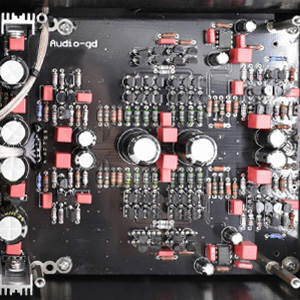
Power supply
The R-7's impressive power stage consists of 3 R-Core transformers with low noise and low flow leakage. A total of 130W of power is therefore used to power all the digital parts as well as the left and right analog channels. The DC signal is distributed to 19 low noise shunt controllers via 3 linear power supplies. Such a large power supply stage provides the entire system with its own signal and thus contributes to the sound quality of the device.
Oversampling & NOS Modes
The R-7 offers several Oversampling or NOS (Non-Oversampling) modes. If you wish to choose Oversampling, simply select the value "O". If you want to choose the NOS then you have to choose the value "N". You can then select one of the following modes to adapt the playback to your listening experience.
| Oversampling modes | |
|---|---|
| Mode 0 | NOS Mode |
| Mode 2 | 2x Oversampling |
| Mode 4 | 4x Oversampling |
| Mode 8 | 8x Oversampling |
| NOS Modes | |
|---|---|
| Mode 1 | Simplest data processing |
| Mode 2 | FIFO Data |
| Mode 3 | Faster data processing |
Technical characteristics
| Specifications | |
|---|---|
| Product type | DAC R2R |
| SNR | > 120dB |
| Output impedance | < 5 Ohm (XLR, RCA) |
| Output level | RCA : 2.5V XLR : 5V ACSS : 2+2MA |
| Frequency response | 20Hz - 20kHz |
| THD | < 0.0005% |
| Input sensitivity | Coaxial 75 Ohm : 0.5Vp-p Optical : 19dBm HDMI : 3.3V |
| Supported OS (USB) | Windows, OSX, Linux, ISO |
| Sampling rate | USB, I2S : 32bits 44.1kHz - 384kHz / DSD 64-512 Coaxial, Optical : 24bits 44.1kHz - 192kHz |
| Inputs | 1x Coaxial RCA SPDIF 1x Coaxial BNC SPDIF 1x Optical Toslink 1x I2S LVDS via HDMI 1x USB Amanero 1x XLR |
| Outputs | 1x Balanced ACSS 1x Balanced XLR 1x Single-Ended RCA |
| General | |
|---|---|
| Consumption | 48W |
| Dimensions | 430 x 430 x 93mm |
| Housing material | 100% Aluminium |
| Color | Noir |
| Accessories | 1x Power cable 1x USB cable |
| Input | Optical |
| Input | BNC |
| Input | SPDIF |
| Input | I2S via HDMI |
| Input | I2S via RJ45 |
| Output | RCA |
| Output | ACSS |
| Output | XLR |
| DAC / ADC Chip | NC |
| Max sampling rate | 384kHz |
| Max sampling rate | DSD512 |
| Color | Black |
| Networking | No |
| Remote Control | No |
No reviews at this time.


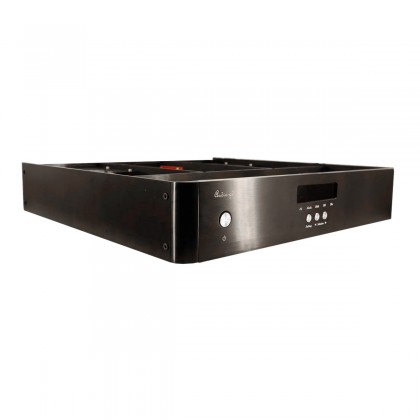










![[GRADE S] FURUTECH DAS-4.1 Balanced Interconnect Cable OCC DUCC Copper Ø10mm 1.3m](https://www.audiophonics.fr/64493-thumb_default/furutech-das-41-balanced-interconnect-cable-occ-ducc-copper-o10mm.jpg)
![[GRADE A] AUNE S9C PRO DAC 2x ES9068AS Discreet Headphone Amplifier 5W Bluetooth 32bit 768kHz DSD512 MQA Back](https://www.audiophonics.fr/64487-thumb_default/aune-s9c-pro-dac-2x-es9068as-discreet-headphone-amplifier-5w-bluetooth-32bit-768khz-dsd512-mqa-back.jpg)

![[GRADE A] Mono Power Amplifier Modules LM3886 with Heatsinks 2x120W / 8 Ohm (Pair)](https://www.audiophonics.fr/64212-thumb_default/mono-power-amplifier-modules-lm3886-2x120w-8-ohm-pair.jpg)



















